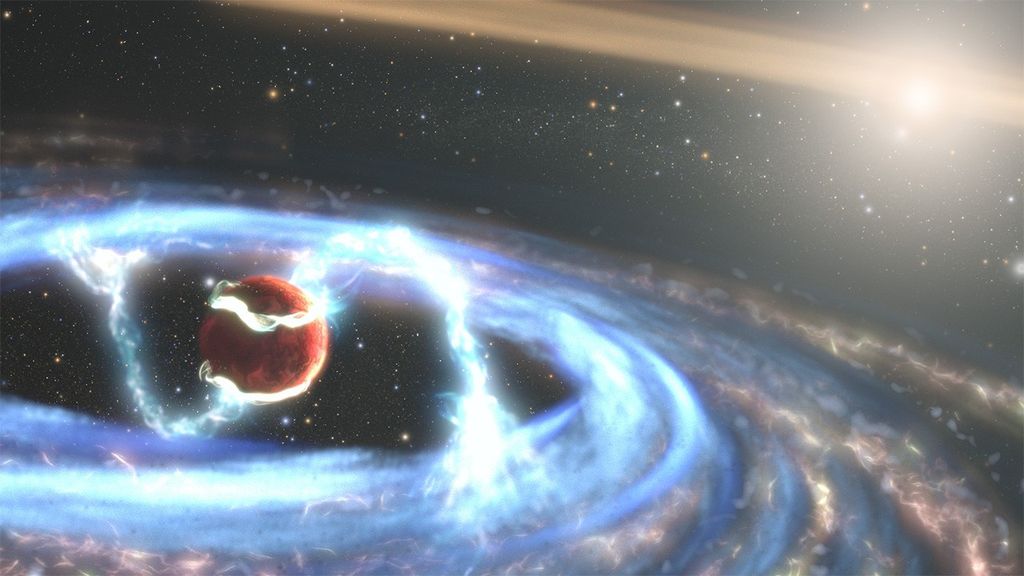Water, water everywhere – including below the surface on the Moon and Mars. University teams will compete in a NASA challenge to develop technologies capable of extracting water on the Moon and Mars.
NASA and the National Institute of Aerospace (NIA) have selected 12 university teams as semi-finalists in NASA’s 2021 Revolutionary Aerospace Systems Concepts – Academic Linkage (RASC-AL) Special Edition: Moon to Mars Ice & Prospecting Challenge. These finalists will design, build, and test prototype systems capable of extracting water from ice deposits buried beneath the simulated lunar or Martian soil.
NASA has confirmed water on the sunlit surface of the Moon and ice at the poles in addition to extensive subsurface water-ice deposits at mid to high latitudes on Mars. In the future, a rover called VIPER will roam the surface to inform the first global water resource maps of the Moon. These maps will be extremely valuable for Artemis mission planners as they prioritize lunar surface science priorities and exploration objectives, including those established for the first woman and next man to land on the Moon.
Being able to harvest and use that water is another feat. This innovation challenge aims to advance critical technologies needed to make it possible. The student teams will design and build hardware that could identify, map, and drill through various subsurface layers, then extract water from a 600-pound ice block in a simulated off-world test bed.
“The ability to access water – wherever you are – is crucial to future human space exploration,” said NASA’s chief technologist Douglas Terrier. “Equally important is the willingness for NASA to continually seek fresh approaches. These bright undergraduate and graduate students will compete with each other, but also learn from each other, while we all strive to solve such a fundamental challenge.”
Semi-finalists will receive a $5,000 stipend to begin building their systems during the next three months. Judges will select the finalists in March. Ten teams will get an additional $5,000 stipend to demonstrate their systems for a panel of judges including NASA engineers and researchers along with experts from industry.
The semi-finalist teams for the 2021 Moon to Mars Ice & Prospecting Challenge are:
- Auburn University, Alabama – Obtaining Access to Subsurface Ice Sources (OASIS)
- California Polytechnic State University, San Luis Obispo – Sub-lunar Tap Yielding eXplorer & Surface Telemetry Op. and Next-gen. Excavation Syst. (STYX&STONES)
- Colorado School of Mines, Golden – Moon/Mars Ice New Exploratory System
- Massachusetts Institute of Technology, Cambridge – HYDRATION III: High Yield Dihydrogen-monoxide Retrieval And Terrain Identification On New worlds
- Northeastern University (with Design Automation Associates), Boston – PARSEC: Percussive And Rotary Surveying & Extracting Carousel
- San Diego State University (with Collins Aerospace) – Aztec in-situ Resource Extraction System (ARES)
- South Dakota State University, Brookings – JAMMER: Jackrabbit Automated Moon to Mars Extractor and prospectoR
- Stevens Institute of Technology, Hoboken, New Jersey – EXT.R.A.C.T.I.N.A.T.O.R.
- State University of New York (SUNY) Polytechnic Institute, Utica – Polytechnic Ice Surveyal, Collection, and Extraction System (PISCES)
- Texas A&M University – College Station – DRilling and Extraction AutoMated System (DREAMS)
- University of Pittsburgh – Vaporizer of Underground Liquid for Consumption by Astronaut coloNists (VULCAN)
- Virginia Polytechnic Institute and State University, Blacksburg – Two-Probe AUtomated Regolith Upheaval System
During the competition finalists will harvest as much water as possible from simulated slices of lunar and Martian surfaces. They will also participate in a poster session, presenting on the differences between operating their hardware on Earth versus the Moon and Mars and explaining any adaptations their prototypes would need for each destination.
The Moon to Mars Ice and Prospecting Challenge is managed by NIA, and is sponsored by NASA’s Office of the Chief Technologist, Science Mission Directorate, and Space Technology Mission Directorate, with support from the Human Exploration Operations Mission Directorate’s Advanced Exploration Systems and Langley’s Systems Analysis and Concepts Directorate. Industry sponsors include Honeybee Robotics, Aercon, and Pancopia.
To learn more about the Moon to Mars Ice & Prospecting Challenge, visit:
http://specialedition.rascal.nianet.org/
Kristyn Damadeo
NASA’s Langley Research Center, Hampton, Va.
757.755.0366
kristyn.damadeo@nasa.gov

























